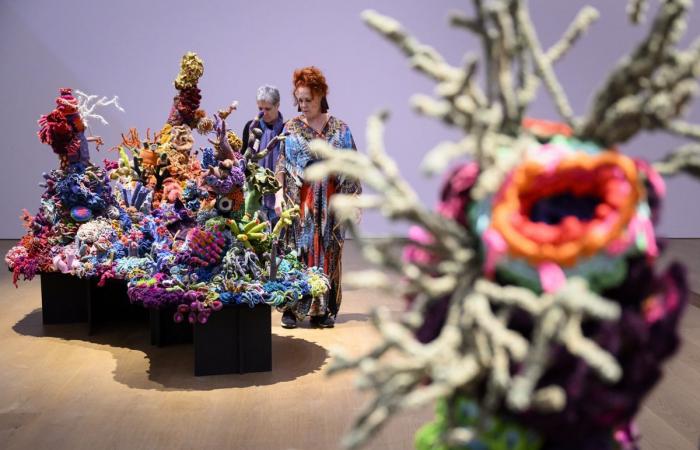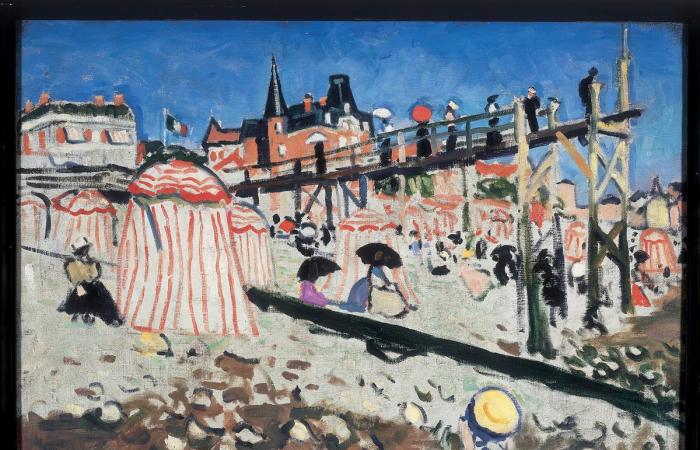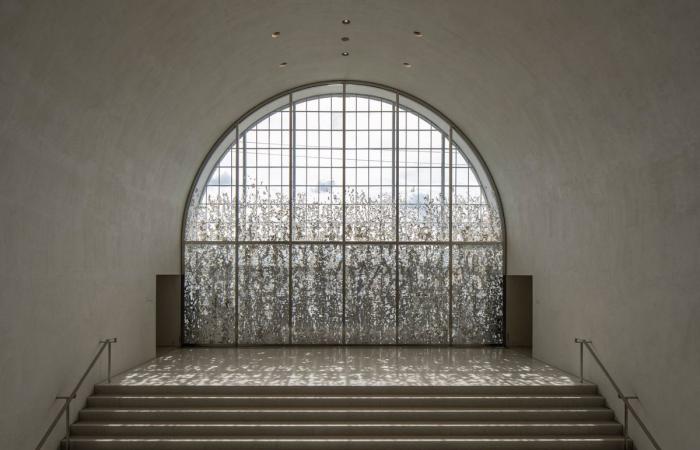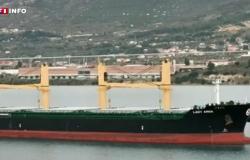– “Thalassa!”, an exhibition that goes beyond the sea
In art, not all representations of the sea are postcard-like. This is what the Cantonal Museum of Fine Arts shows over two centuries.
Published today at 3:57 p.m.
“The Crochet Coral Reef” features in the contemporary section of the exhibition. Margaret Wertheim and Christine Wertheim entrusted the creation of the crocheted pieces of this collective work to nearly 4,000 women.
KEYSTONE/Laurent Gillieron
Subscribe now and enjoy the audio playback feature.
BotTalk
Switzerland, a landlocked country, knows how to surprise on the maritime subject! When we know that its navy – first military then merchant – has flown the flag with a white cross on a red background for more than eight decades. And that the Alinghi crews brought back the prestigious America’s Cup twice.
It is also in this freshwater Switzerland, in this cradle of mountain painters, that thematic insight into the way of seeing and interpreting the sea has opened up over the last two centuries. An idea from the Cantonal Museum of Fine Arts in Lausanne which ventures into an exhibition theme, not yet used. Especially since the sea only appeared late on the palette of classical painters and without any real race for a masterpiece.
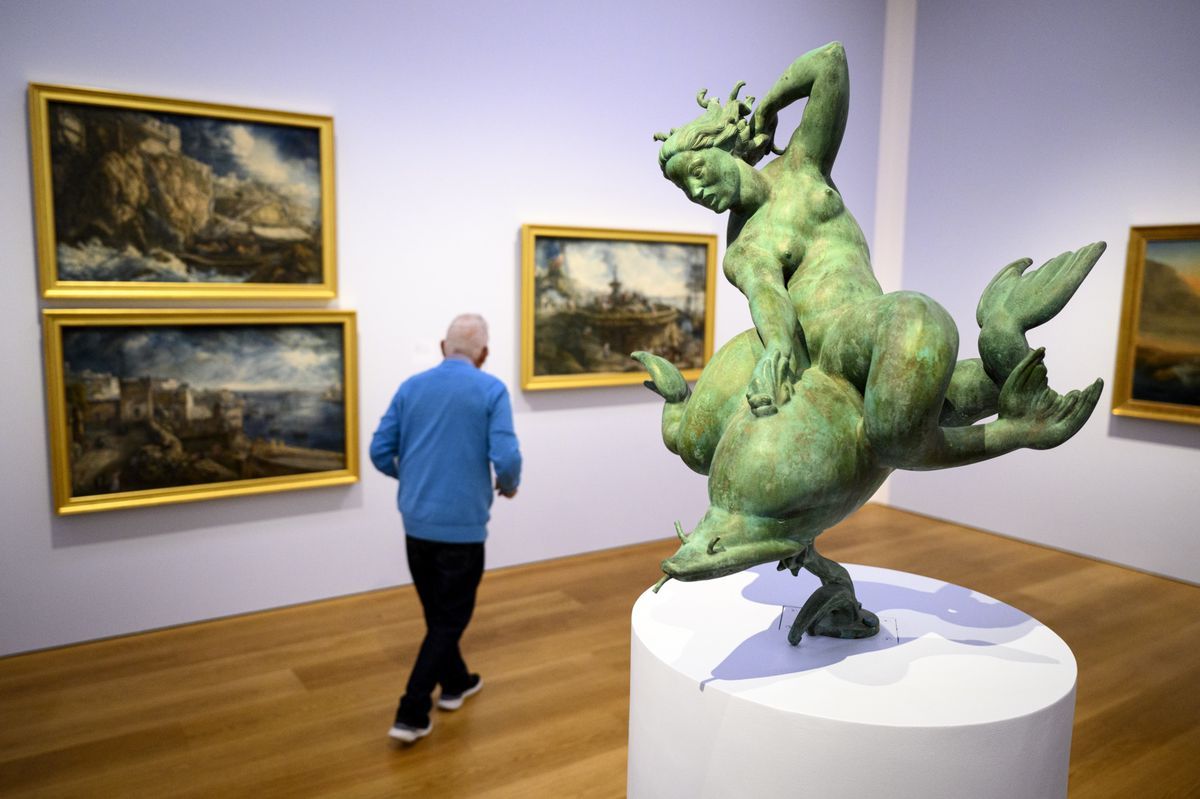
The sea became a subject to paint at the beginning of the 19th centurye century, but this great unknown is still kept at bay by artists, including the Vaudois Louis Ducros.
keystone-sda.ch
Hard, hard, therefore, to spontaneously list those which would stand out from the lot of seas, storms and other port views. But we think of “The Great Wave off Kanagawa” by Hokusai, yes. With the golden cyclonic atmospheres of William Turner, with the tight framing of the waves of Gustave Courbet or Claude Monet. And, of course, to the terrible story of Théodore Géricault in “The Raft of the Medusa”. As in the meditative solitude of “Monk by the Sea” by Caspar David Friedrich – of which an echo of Caroline Bachman et Stefan Banz – appears in the Lausanne exhibition. The place is the same, the sky has cleared: the strangeness remains.
The choice of proximity
This last canvas, like the vast majority of the pieces that make up “Thalassa! Thalassa! The imagination of the sea”, comes from Switzerland. And even collections from the Lausanne institution. With, out, the Vaudois Louis Ducros, attracted by the stormy surges of the big blue on the foothills of Malta or the lakeside François Bocion on a trip to Venice, on waters as calm as those of his Lake Geneva. There are also these Vallottons, a nude which is one with the beach, and the “Tents at Trouville” where the sea, absent from the composition, exists only in the idea. The distrust remains. We must still coax this border with the unknown, inhabit its shores, probe its depths, dare to venture into its abysses before abandoning ourselves to its promises. Its myths. Or its energies.
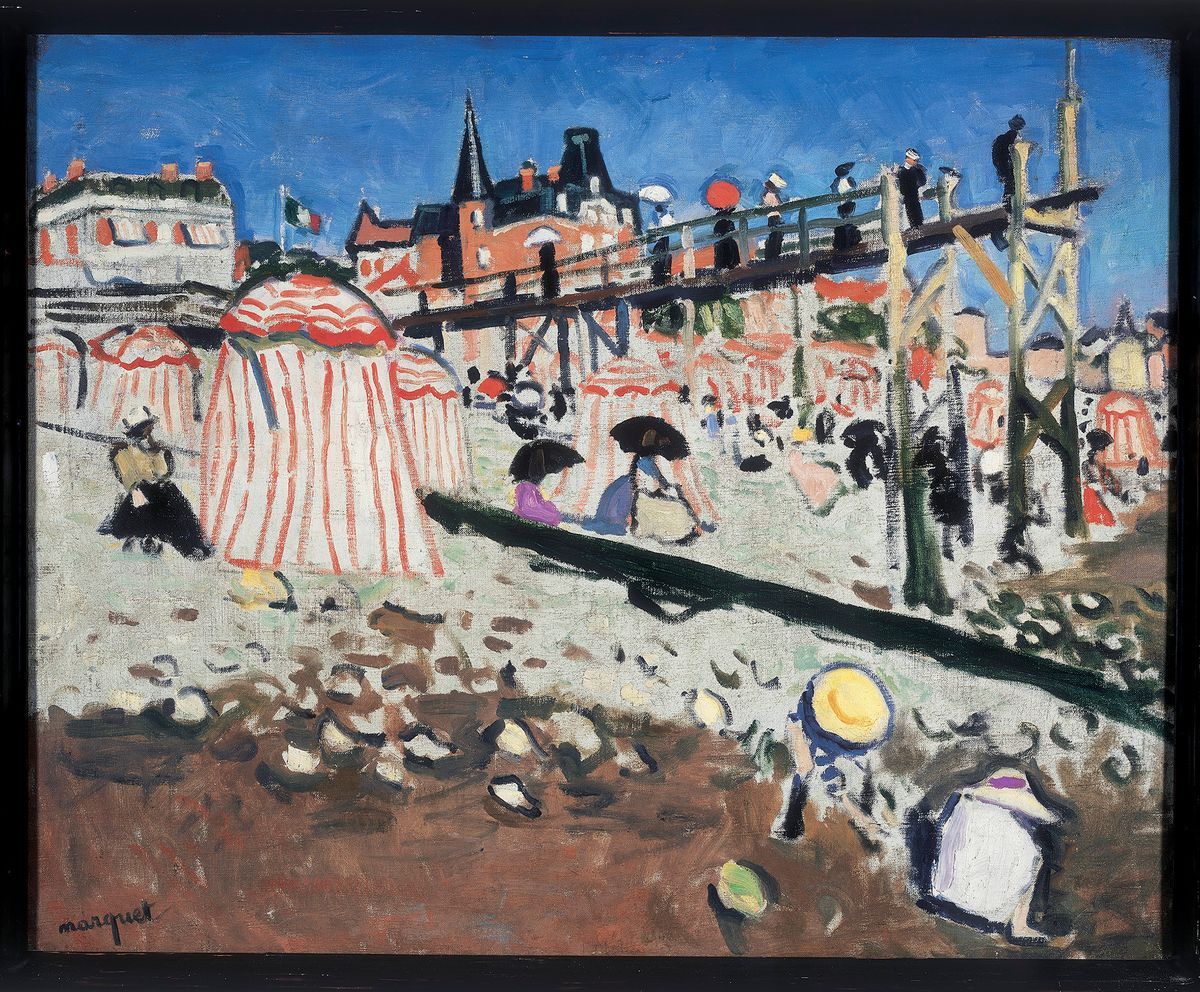
In “La plage de Sainte-Adresse”, 1906, Albert Marquet leaves the sea behind to take an interest in the activities it begins to generate.
MCBA/Private collection
Step by step, this is what the exhibition tells, remaining, by choice, within the scope of figurative Western art. And in this desire to carefully document a conquest that is both scientific and artistic, by mixing collections of shells and other silhouettes of the depths with the exhibition. Was it really necessary? The charm comes more easily from these vases with marine motifs, witnesses of a fashion that is as ornamental as it is spooky. Or this first underwater landscape painted from nature, a little treasure by the Austrian artist-explorer Eugen von Ransonnet-Villez. It’s 1864!
From cry of joy to realization
When passing upstairs at the MCBA, we change eras – it has almost become a habit – to find contemporaries. And a question. “We wanted to see how this “Thalassa!” Thalassa!”, the cry of joy of the Greek mercenaries at the moment when they understood the imminence of their return, resonates today. We are no longer really in this tone, adds commissioner Catherine Lepdor in the same breath. The sea is an archipelago of plastic, the tomb of migrants, an ecosystem in danger.”

Sandrine Pelletier, “The Drowned World”, an ephemeral creation for the exhibition “Thalassa! Thalassa! The imagination of the sea.
MCBA
The chosen works bear witness! Anchored by irremediable observations, all flourish in a form of gravity but without ever forgetting this artistic breath which takes us beyond. In the dreams that filter through the maps that François Burland creates with young migrants. In the energies crocheted by 4000 women to form the picturesque coral reef imagined by sisters Margaret and Christine Wertheim.
As in the universality of the continuous rain of personal and historical objects that Yael Bartana films as they reach the abyss. Or in this poignant subtlety of the ephemeral stained glass window made of silver paper by Sandrine Pelletier on the large bay window of the entrance hall. From a distance, we see choppy waves slamming against a rock. Closer, we think of a tarnished mirror or the fragility of a world before it shatters…
Lausanne, MCBA, until January 12, Tue-Sun (10 a.m.-6 p.m.), Thu (10 a.m.-8 p.m.). www.mcba.ch/
“Latest news”
Want to stay on top of the news? “24 Heures” offers you two appointments per day, directly in your email box. So you don’t miss anything that’s happening in your Canton, in Switzerland or around the world.
Other newsletters
Log in
Florence Millioud joined the cultural section in 2011 out of a passion for people of culture, after having covered local politics and economics since 1994. An art historian, she collaborates in the writing of exhibition catalogs and monographic works on artists.More info
Did you find an error? Please report it to us.
2 comments


